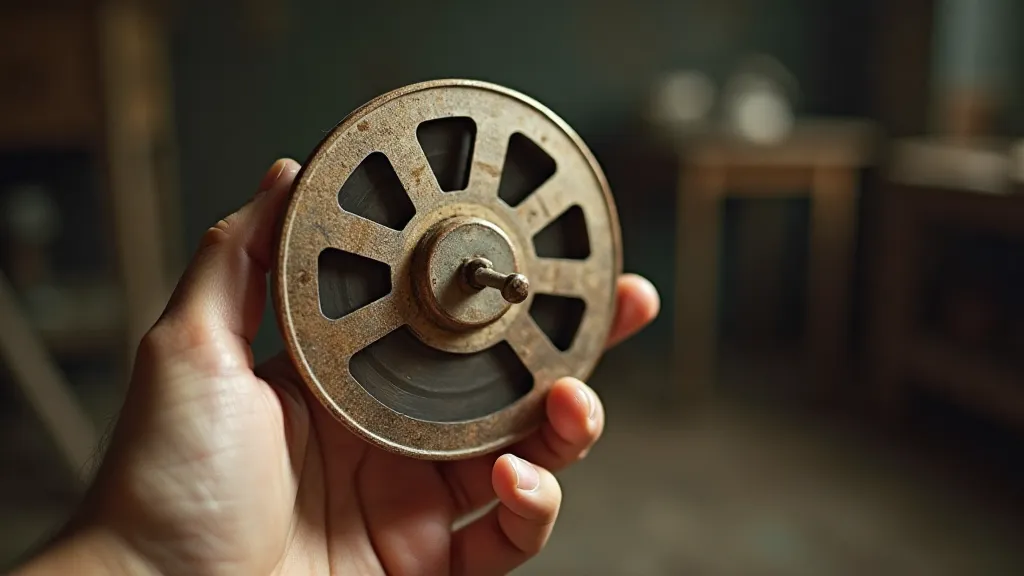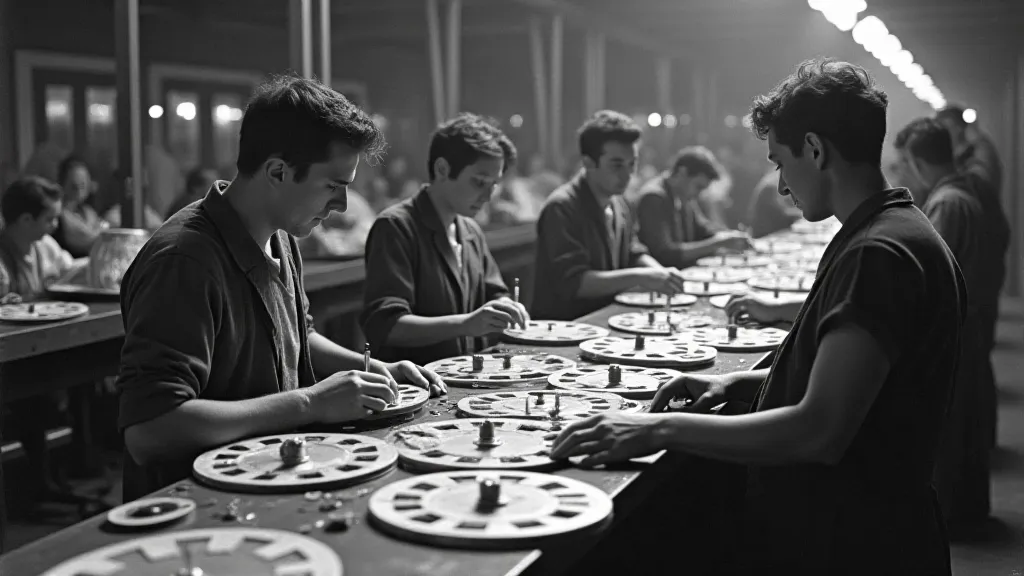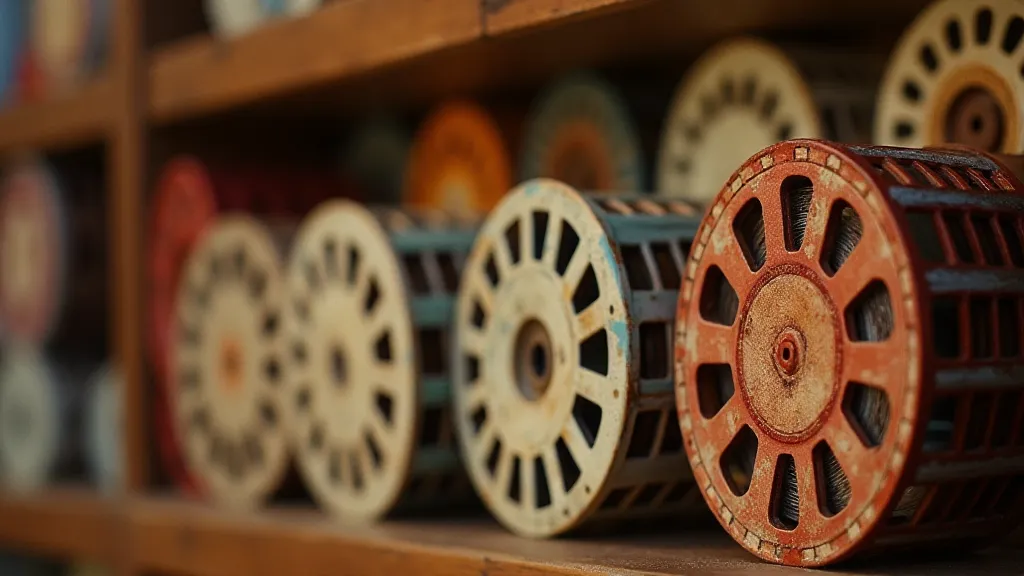The Anatomy of Absence: Understanding Reel Damage and its Stories
The gentle *click* of a View-Master reel advancing, the kaleidoscopic panorama blossoming before your eyes – it's a portal to a forgotten age, a rush of nostalgia potent enough to conjure sun-drenched vacations and the thrill of discovery. But what happens when that portal is clouded, when the vibrant landscapes are marred by scratches, dust, or the creeping tendrils of mold? The damage we see on vintage View-Master reels isn’t simply a flaw; it's a whisper from the past, a silent testament to a reel's journey through time and the lives it touched.
I remember finding a box of View-Masters at an estate sale years ago. Amongst the brightly colored reels of Disneyland and the Swiss Alps, there was a small, unassuming set labeled “Grand Canyon.” It wasn't the pristine condition you’d expect; several reels were warped, with faint surface scratches that obscured the details of the towering rock formations. Holding those reels, I felt a pang of sadness – not for the damaged plastic, but for the lost experiences they represented. Who had held these reels? Where had they traveled? What did they see?

The Scars of Time: Common Reel Degradation
The forms of reel degradation are varied, each telling a different story. Scratches, often fine and spiderweb-like, are probably the most common affliction. These aren’t always the result of careless handling. Many originated during the manufacturing process itself; imperfections in the injection molding can leave microscopic flaws that manifest as surface scratches decades later. Then there are the more significant scratches—those caused by dropped reels, frantic searching in toy boxes, or even the careless swipes of a small hand. These tell a more direct tale of youthful exuberance and the inevitable wear and tear of cherished possessions.
Mold, a greenish-gray fuzz, is another frequent visitor. Humidity is its ally. Stored in damp basements or humid attics, reels are vulnerable. Mold isn’t just unsightly; it can permanently damage the diapositive images and, in severe cases, compromise the structural integrity of the reel itself. It's a stark reminder that even seemingly indestructible objects are susceptible to the relentless forces of nature.
Fading is perhaps the most melancholic form of degradation. The vibrant colors of a Hawaiian sunset or the intricate details of a Venetian canal slowly leech away, victims of prolonged exposure to light and air. This is more than aesthetic loss; it’s a dimming of memory itself. The images, once so vivid, become muted echoes of their former glory.
Warping, where the reel loses its circular form and takes on an uneven shape, is often a consequence of heat or uneven storage. A reel left baking on a car dashboard in the summer sun can warp permanently, rendering it unreadable in a View-Master. Warping can also be caused by the plastic itself degrading over time, particularly in older reels made from less stable polymers.
Beyond the Surface: Clues to a Reel's Past
Consider the reel itself – the texture, the font used on the title strip. Early reels often have a distinctive, slightly grainy texture compared to later, more polished versions. The font used to identify the subject matter – "Hawaii," "London," "Yellowstone" – can act as a dating tool. Collectors often use these subtle details to pinpoint a reel's production year, and to understand its place within the broader history of the View-Master franchise.
Look closely at the cardboard backing. Does it bear the faint imprint of a child's fingerprints? Is there a small sticker residue, hinting at a forgotten sticker collection? These seemingly insignificant details offer tantalizing glimpses into a reel’s personal history. Every mark, every imperfection, is a potential clue, a whispered fragment of a past adventure.
The Craftsmanship of Wonder
The View-Master, born in 1939, wasn’t just a toy; it was a technological marvel for its time. The process of creating the reels involved intricate photographic techniques and painstaking assembly. The diapositive images themselves were often painstakingly hand-colored, requiring a level of artistry and skill that’s rarely appreciated today. The sheer volume of images needed to fill a single reel—100 or more—is astonishing. Each one had to be perfectly aligned and securely mounted within the reel frame. This was a labor of love, a commitment to delivering an immersive and visually captivating experience.

A Collector's Appreciation
Collecting View-Master reels isn’s just about accumulating objects; it’s about preserving memories. It’s about connecting with a bygone era, a time when travel was a more deliberate and awe-inspiring experience. A damaged reel isn't a liability for a serious collector; it’s a unique artifact, a testament to its resilience and a conversation starter. A reel with a prominent scratch or a faded image tells a story that a pristine one simply can’t. It reminds us that these objects were once held, cherished, and taken on adventures – and that even in their imperfect state, they retain a profound and enduring value.
Restoration, while tempting, requires a delicate touch. Aggressive cleaning or attempts at re-coloring can often do more harm than good. Often, the best approach is to simply appreciate the reel as it is, acknowledging its history and celebrating its imperfections. The subtle imperfections are what make each reel unique, what give it character, what connect us to the people who held it before us. They are not flaws; they are stories etched in plastic.
Consider the power of simple observation. Hold a damaged reel in your hand. Feel its texture. Examine the imperfections. Imagine the life it has lived. It’s a journey back in time, a glimpse into a world of wonder and adventure. And in that moment, you’re not just a collector; you’re a custodian of memories, a guardian of a truly remarkable piece of history.






